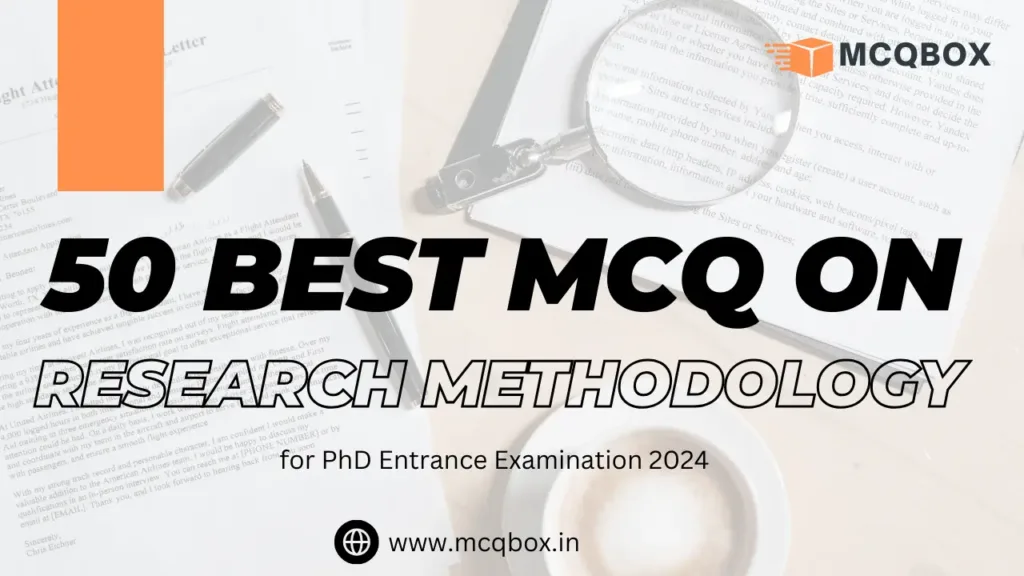Prepare to ace your PhD entrance examination with the 50 Best MCQs on Research Methodology. Sharpen your skills and get ready for success!
Table of Contents
50 Best MCQs on Research Methodology

MCQs on Research Methodology SET-1
1. Which of the following is NOT a characteristic of scientific research?
A) Objectivity
B) Subjectivity
C) Systematic
D) Empirical
Answer: B) Subjectivity
2. The process of reviewing existing literature to gather information and ideas related to a research topic is known as:
A) Data analysis
B) Data collection
C) Literature review
D) Data interpretation
Answer: C) Literature review
Research Methodology: MCQ question and answers
3. Which of the following is NOT a qualitative research method?
A) Survey
B) Case study
C) Ethnography
D) Grounded theory
Answer: A) Survey
4. What is the purpose of a pilot study in research?
A) To test the feasibility of the main study
B) To gather preliminary data
C) To refine research methods
D) All of the above
Answer: D) All of the above
5. In a normal distribution curve, what percentage of data falls within one standard deviation from the mean?
A) 68%
B) 75%
C) 95%
D) 99.7%
Answer: A) 68%
6. Which sampling method involves selecting every nth member from a list to be included in the sample?
A) Stratified sampling
B) Systematic sampling
C) Convenience sampling
D) Snowball sampling
Answer: B) Systematic sampling
7. Which of the following is NOT a component of a research proposal?
A) Abstract
B) Introduction
C) Literature review
D) Data analysis
Answer: D) Data analysis
8. What is the primary purpose of an experimental research design?
A) To establish cause-and-effect relationships
B) To describe and understand phenomena
C) To explore relationships between variables
D) To gather in-depth insights
Answer: A) To establish cause-and-effect relationships
9. Which statistical test is used to determine if there is a significant difference between the means of two independent groups?
A) t-test
B) ANOVA
C) Chi-square test
D) Pearson correlation
Answer: A) t-test
| S. No | Topic | Link |
| 1 | MCQ on Sampling | Click here |
| 2 | MCQ on Measure of Central Tendency | Click here |
| 3 | MCQ on Measure of Dispersion | Click here |
| 4 | MCQ on Types of Research | Click here |
10. What is the term for the extent to which research findings can be generalized to other populations, settings, and times?
A) Validity
B) Reliability
C) Generalizability
D) Replicability
Answer: C) Generalizability